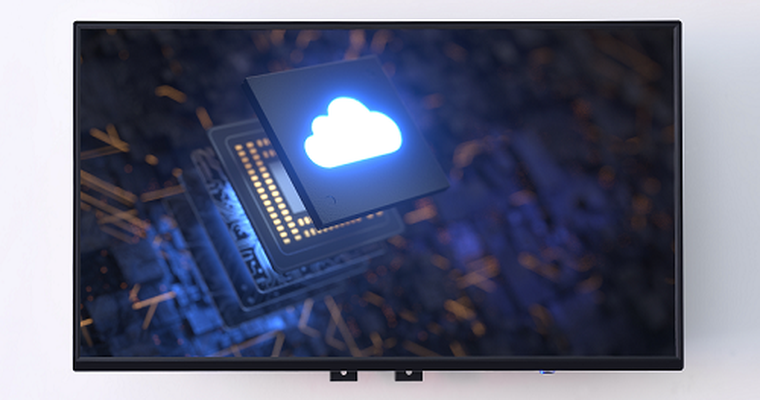Historically, digital signage installations have used display screens with a separate Windows-or Linux-based media player/PC. However, around 2013, System on Chip (SoC) displays hit the market and have become more prevalent in recent years.
Historically, digital signage installations have used display screens with a separate Windows-or Linux-based media player/PC. The media player is the brain communicating with the server and network to tell the screen what media to play. However, around 2013, System on Chip (SoC) displays hit the market and have become more prevalent in recent years. SoC screens provide a compelling alternative to traditional digital signage with lower implementation costs, a multi-core processor inside and eliminating the need for an external player and associated cables.
There are advantages and disadvantages to traditional digital signage with an external player and with SoC displays. When deciding what makes sense for your organization, it is vital to consider cost, usage, installation, and management. Let’s take a look at each of these areas in detail.
Cost
Traditional digital signage with external media players typically has a higher upfront capital cost. There are also maintenance and support costs to consider. On the other hand, SoC screens, such as those from Samsung or LG, are much simpler than screens with external media players. In addition, SoC units are easier to maintain, have lower failure rates and reduced cabling and installation costs. In both scenarios, you will want to purchase digital signage software to help you run your display network effectively and efficiently.
Usage
It is essential to consider how and where you plan to use your screens. SoC screens are a good option when you have space constraints or need the screen flush against the wall. The built-in media player eliminates extra cabling and hardware space requirements and is sleeker, tidier visually and beneficial when trying to retrofit older spaces with screens.
Additionally, consider the content you intend to show on your screens. For example, are you creating a video wall or planning to use HD/4K or processor-intensive content? If the answer is yes and power is a priority, an external media player is typically better in these scenarios.
Installation
SoC screens eliminate the need for an external player and the related cabling. There is no need to cable a player to the screen, a network cable to the player, and so on. Reducing cabling requirements can significantly impact installation time and make SoC screens easier to mount. To a certain extent, SoC screens are plug-and-play. However, if using displays from different manufacturers, expect some inconsistencies in features and functionality.
Management
SoC screen networks have fewer components than a traditional digital signage network, which reduces the number of failure points and provides some advantages in monitoring and control. One important consideration is that when a media player fails in the field, you can swap in a new player; however, if an SoC screen fails, you must replace the entire screen.
Important considerations for SoC displays
As you weigh the pros and cons between traditional digital signage with an external player and with SoC displays, consider these questions:
- Do you have intensive video requirements?
- What types of applications (i.e. videowall) are you planning to run?
- Are you installing it into existing infrastructure?
- Do you want to integrate with real-time data?
- Do you need a solution that supports HTML5?
- What type of operating system are you planning to use?
- Are you planning to use digital signage software?

